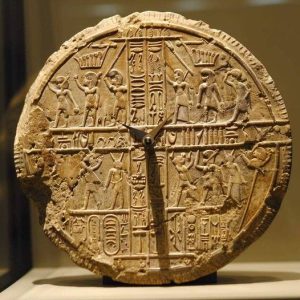Think about how you measure your day. You check your watch, noting the hour, the minutes, the seconds ticking by. It’s such a fundamental part of modern life, we rarely stop to consider where these divisions came from. But rewind roughly 5,000 years, to the fertile plains of ancient Mesopotamia (modern-day Iraq), and you’ll find the ingenious civilization that laid the groundwork for our very perception of time: the Sumerians.

These weren’t just early settlers; they were revolutionary thinkers who developed a sophisticated numerical system based on the number 60. Yes, you read that right – 60. This unique system, known as the sexagesimal system, might seem a bit unusual to us accustomed to our base-10 world, but it was a stroke of brilliance that continues to resonate every minute of every day.
Why 60? Unlike our decimal system, which is convenient because we have ten fingers, the Sumerians’ choice was rooted in practicality. The number 60 is exceptionally divisible. You can evenly divide it by 1, 2, 3, 4, 5, 6, 10, 12, 15, 20, and 30. Imagine trying to divide an hour neatly into thirds or quarters using only a base-10 system – it wouldn’t be as clean. This high divisibility made calculations for trade, agriculture, and, crucially, timekeeping, much more efficient.
The Sumerians weren’t just playing with numbers; their need for precise timekeeping was deeply intertwined with their way of life. As an agricultural society, knowing exactly when to plant and harvest their crops was vital for survival. They needed accurate calendars to align with the seasons, ensuring bountiful yields. Furthermore, their complex religious ceremonies and the administration of their burgeoning city-states demanded a coordinated sense of time.
To meet these needs, the Sumerians looked to the heavens. They became keen observers of celestial bodies, meticulously tracking the movements of the moon and stars. This astronomical knowledge allowed them to develop a lunar calendar consisting of 12 months, a system designed to closely align with the cyclical nature of the agricultural year.
But their most enduring legacy lies in how they divided the day. While the exact transition wasn’t immediate or solely their invention (later civilizations, particularly the Babylonians, further refined it), the foundational concept of dividing a larger unit into 60 smaller units paved the way for the division of the hour into 60 minutes, and each of those minutes into 60 seconds. This seemingly simple yet profound innovation was a monumental achievement, reflecting their advanced mathematical understanding and their commitment to a practical and easily manageable system.
The impact of the Sumerian sexagesimal system didn’t end with their civilization. Their groundbreaking approach to measuring time was adopted and further developed by subsequent powerful cultures, including the Babylonians, the ancient Greeks, and the Romans. These empires, in turn, spread these concepts across the ancient world, ensuring their longevity.
Think about it: every time you glance at a clock or set an alarm, you are engaging with a system that originated in the minds of Sumerian scholars and astronomers five millennia ago. Their innovative base-60 system, driven by the practical needs of their society, has become an invisible yet fundamental framework of our modern lives. It’s a powerful reminder of the enduring influence of ancient ingenuity and how the seeds of our contemporary world were sown in the fertile lands of Mesopotamia. The next time you count those 60 seconds in a minute, take a moment to appreciate the remarkable legacy of the Sumerians – the unsung heroes of our modern clocks.


